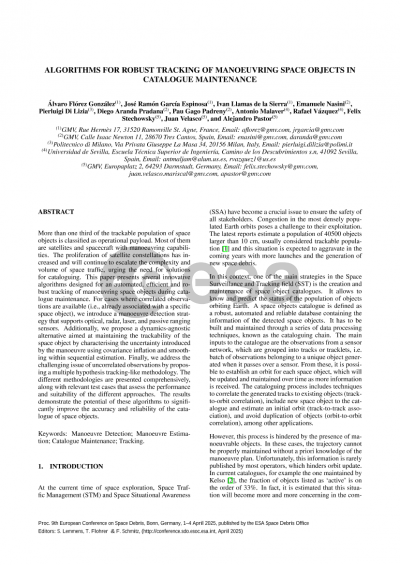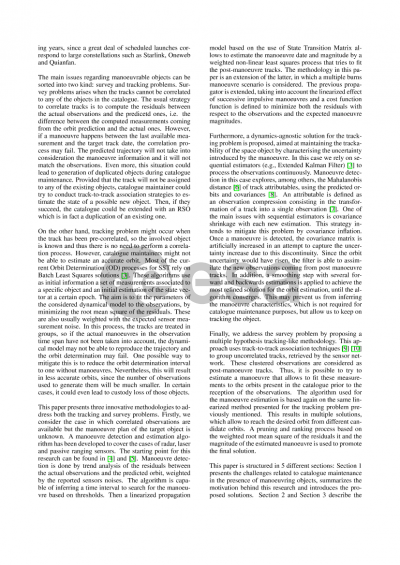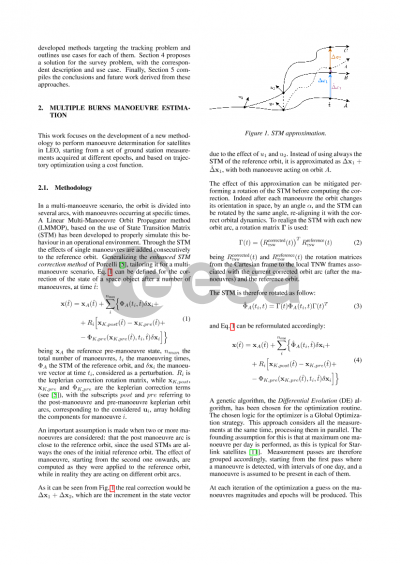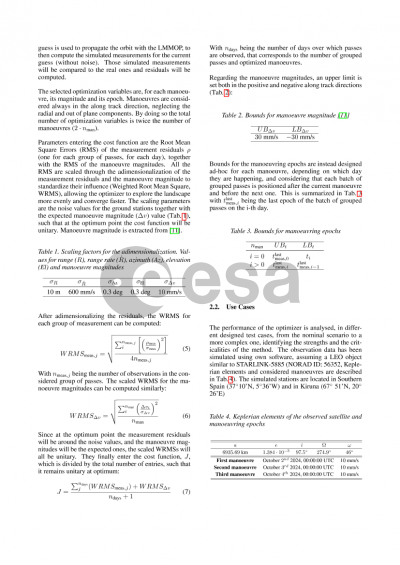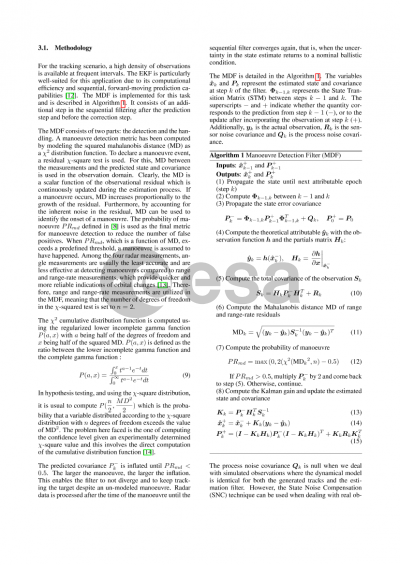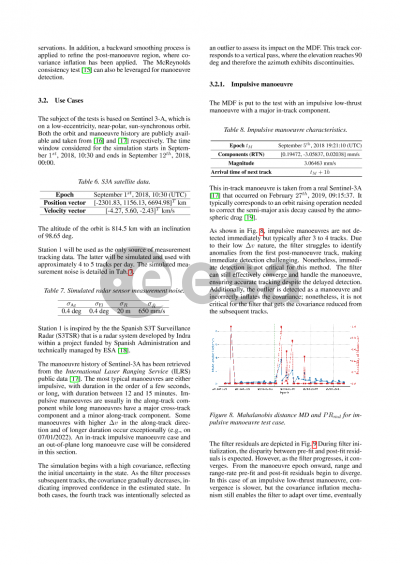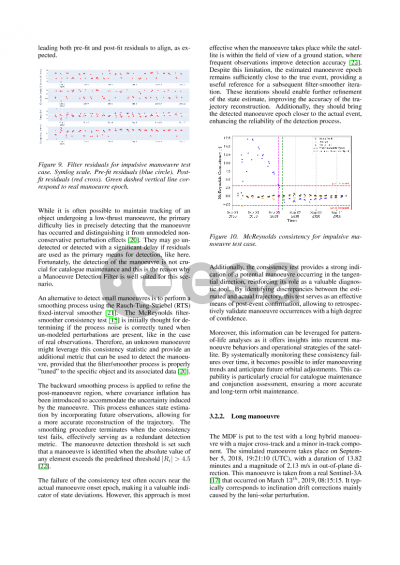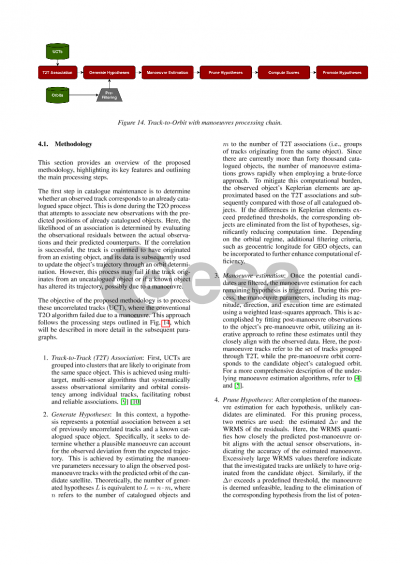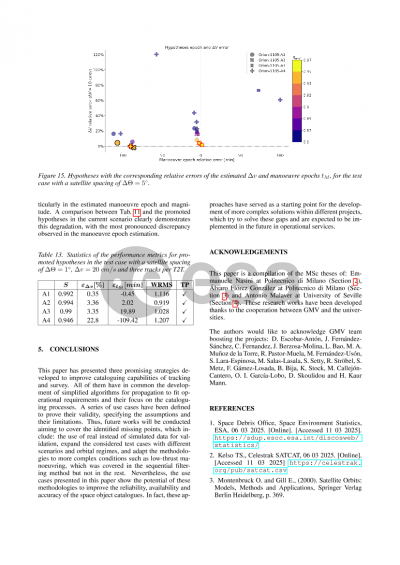Document details
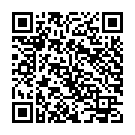
Abstract
More than one third of the trackable population of space objects is classified as operational payload. Most of them are satellites and spacecraft with manoeuvring capabilities, meaning that they may eventually deviate from a purely ballistic trajectory. The proliferation of satellite constellations, such as Starlink or Quianfan, has increased and will continue to increase the complexity and volume of space traffic, urging the need for solutions for cataloguing. Even worse, the manoeuvre plans of the satellites are rarely shared to the public in advance, so space object catalogues are not usually able to consider manoeuvres into the trajectory predictions. This harms catalogue maintenance operations, mainly track correlation and orbit determination: these objects are not found where expected by space surveillance and tracking sensor networks, and the presence of these unmodelled dynamics makes both batch and sequential estimation complicated. This paper presents several innovative algorithms designed to enable the automatic, efficient and robust tracking of manoeuvring space objects during catalogue maintenance.
For cases where correlated observations are available (i.e., already associated with a specific space object), we introduce a manoeuvre detection strategy that supports optical, radar, laser, and passive ranging sensors. This is done by trend analysis of the residuals between the actual observations and the predicted orbit, so that manoeuvres can be detected from trend anomalies. Upon detecting sufficient evidence of a manoeuvre, we explore and compare different estimation methods: optimal control theory, maximum likelihood through least squares, and metaheuristics through differential evolution. These methods try to solve the same problem but with different assumptions and procedures. Additionally, we propose a dynamics-agnostic alternative aimed at maintaining the trackability of the space object by characterising the uncertainty introduced by the manoeuvre, rather than the manoeuvre itself, using covariance inflation and smoothing within sequential estimation. This may prevent us from inferring the manoeuvre characteristics, which is not required for catalogue maintenance purposes, but allow us to keep on tracking the object.
Finally, we address the challenging issue of uncorrelated observations by proposing a multiple hypothesis tracking-like methodology. This approach aims to associate uncorrelated observations, which may be grouped as tracklets, retrieved by the sensor network after custody loss, with already catalogued space objects for which well-established orbits are available. To do so, the different estimation methods, introduced before, are combined with a track-to-track association framework that jointly tackles the association-estimation problem.
The different methodologies are presented comprehensively, along with relevant test cases that assess the performance and suitability of the different approaches. The results demonstrate the potential of these algorithms to significantly improve the accuracy and reliability of the catalogue of space objects. The proposed algorithms can be implemented in operational cataloguing processes and work automatically, enhancing the quality of space objects catalogue.
Preview
